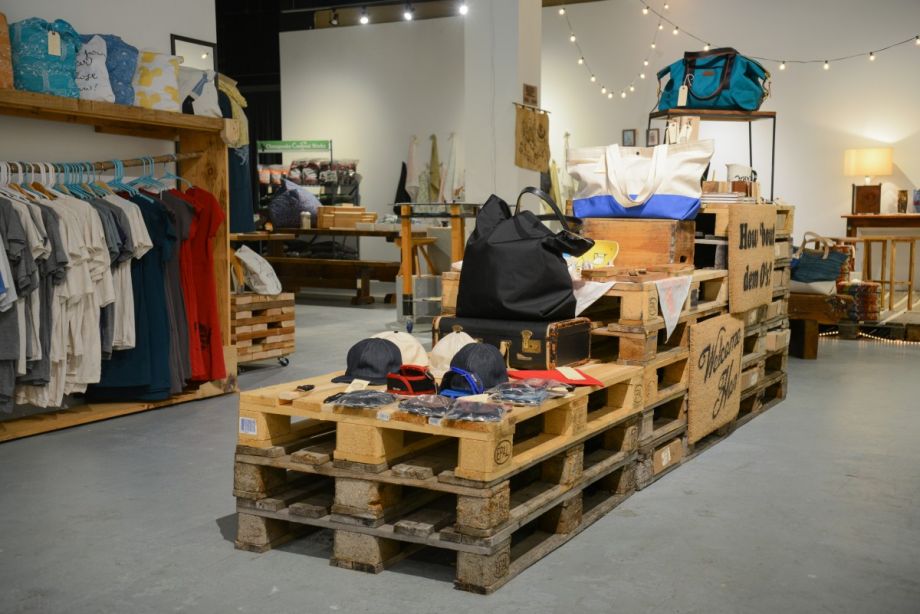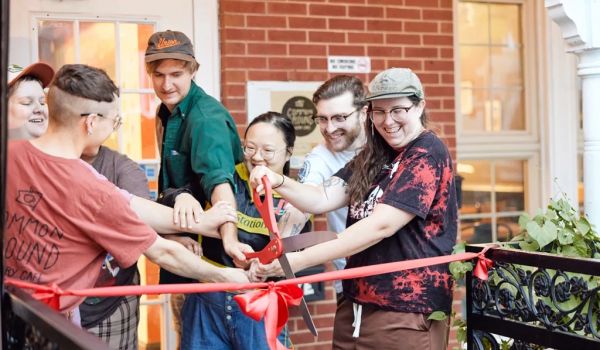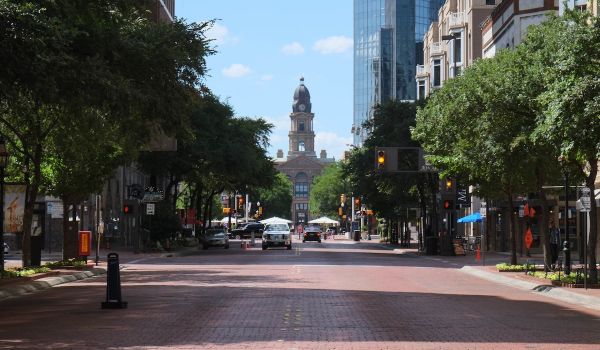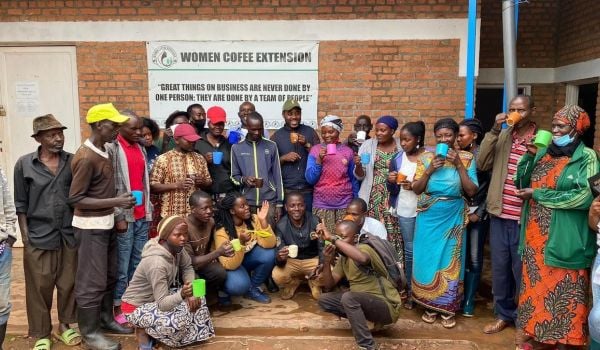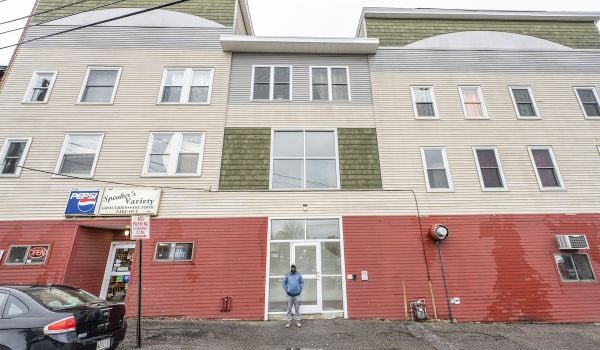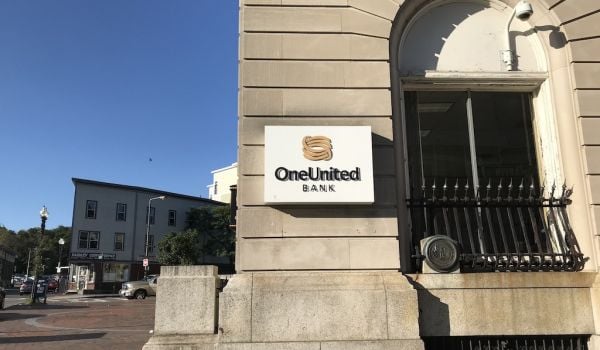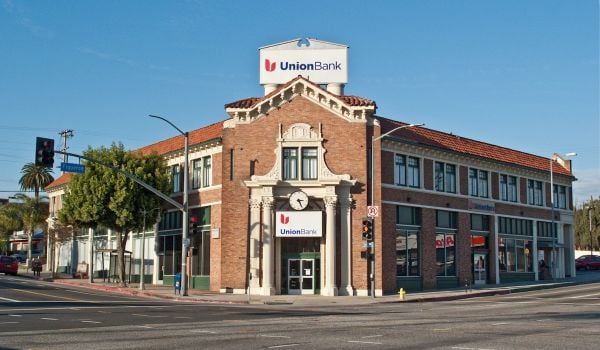Rasheed Aziz doesn’t see young drug dealers navigating the streets of Baltimore as people who are inherently lawless. In fact, he says they’re usually some of the top performers when he’s able to get them involved in his CityWide Youth Entrepreneurship Program.
“They were already involving themselves in entrepreneurship,” he says. “It just was entrepreneurship that wasn’t positive.”
This year he’ll have 35 young people between the ages of 16 and 24 learning how to design their own clothing brands with CityWide’s support. That program doesn’t pay, but he runs another program called Frozen Desert Sorbet that lets those students learn how to run their first business venture by selling snow cones in their neighborhood, pocketing the profit from each sale.
The budding clothing designers who make it through both programs will be just a few of the local talents qualifying for a new city-run program called Made in Baltimore. Taking a page from successful buy-local campaigns like SFMade in San Francisco, Andy Cook, the city staffer who founded the program, says it’s a marketing designation that can bring new types of opportunity to Baltimore’s economy.
“Seventy-five percent of the people in Baltimore don’t have a college degree, so there are a lot of issues and questions when we’re talking about ‘job creation’ here,” he says. “With entry-level ‘job creation’ what we’re often seeing is service sector employment, which is part time and doesn’t come with benefits.”
A 2014 study of more than 1,000 job seekers in Baltimore commissioned by the Opportunity Collaborative found that there are “practically no entry-level jobs” for those without a college degree that pay $22 an hour — enough to support a small family. It also noted that job seekers from low-income neighborhoods are kept out of traditional employment by the high dollar and time costs of traveling from said neighborhoods to booming job centers, and about a fifth of job seekers can’t qualify for traditional jobs because of criminal records.
Cook says giving small businesses the extra boost of being backed by a city-led marketing campaign can help them scale, and create jobs that are “good quality but also accessible to those without higher education.” They’ll be able to put the “Made in Baltimore” logo on their product label, or in their storefront window, but they’ll also benefit from technical support from the city on how to thrive as a business and how to recruit employees.
He started building the program after helping compile a piece of research for the city. Using census data collected between 2003 and 2012, he found that advanced manufacturing companies without employees grew in number by 57 — marking a nine-year increase of 257 percent. Other manufacturing establishments (again, without employees) rose by 67 percent in the same time period.
Alongside those jumps, employees in the manufacturing sector declined.
“We see big companies shedding jobs but see a lot of people starting up their own in light manufacturing,” he says. Manufacturing is traditionally thought of as big operations churning out thousands of high-tech items like cars or computers, but the mother of two making jams in her kitchen and selling them at local farmers markets falls within the industry too.
Made in Baltimore wants to help individuals like that jam producer turn her work into a full-time gig by giving entrepreneurs a network of other local producers through which they can lift each other up. Cook has coordinated four pop-up shops that highlight Baltimore businesses, with the most recent one last December featuring 45 makers. He says they’ve generated an average of $25,000 to $30,000 in sales per event.
“There’s lines out the door, a lot of press coverage,” he says. “It seems, anecdotally, that it’s something that people are craving.”
Keith Bradley, manager of the Made in Kansas City retail stores in Missouri’s largest city, says they work with about 120 local artists and makers who’ve seen similar success by associating their name with the brand.
“It’s exciting, because you watch these smaller companies go from doing something that’s their passion on the side to quitting their day jobs and getting to do that full time,” says Bradley.
Cook’s key influence, SFMade, is also reporting strong growth. It works with more than 640 local certified manufacturers with a payroll total of 5,000-plus employees. They’re getting ready to debut a 4-floor, 50,000-square-foot industrial workshop where small-scale producers can rent space starting in June 2018.
As small-scale manufacturers get pushed out of San Francisco’s pricier real estate and into poor neighborhoods like Bayview-Hunters Point, SFMade helps owners recruit local talent from the low-income communities. “A lot of the times, without SFMade, [manufacturers] just don’t know that the workforce resources are available in the area,” says Janet Lees, SFMade’s chief program officer. Transplanted manufacturers and workers from the traditionally black neighborhoods southeast of San Francisco are now working together to “access the very affluent consumer base that’s here,” she says.
Going forward, Made in Baltimore will work to paint a detailed picture of the local maker scene. They want to know just how many small-scale producers there are, crafting gems in their kitchens or backyards or garages that they then sell to neighbors. “We don’t think a lot of that is being captured by the broader economic studies going on in the city,” Cook says.
They’re also scanning for real estate in industrially zoned areas with the hope of creating a space similar to what SFMade is creating for rental spaces. Meanwhile, one of Baltimore’s newest makerspaces, Open Works, has offered to let Made in Baltimore run some of its workshops and presentations at their facility.
As for drivers of the local industry like Aziz, he says the new program will turn even more youth with great ideas off the street and into the local economy. “Maybe they haven’t scaled as of yet, but I’m out here. I see them,” he says. “They’re coming.”
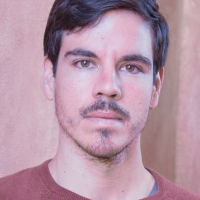
Johnny Magdaleno is a journalist, writer and photographer. His writing and photographs have been published by The Guardian, Al Jazeera, NPR, Newsweek, VICE News, the Huffington Post, the Christian Science Monitor and others. He was the 2016-2017 equitable cities fellow at Next City.

